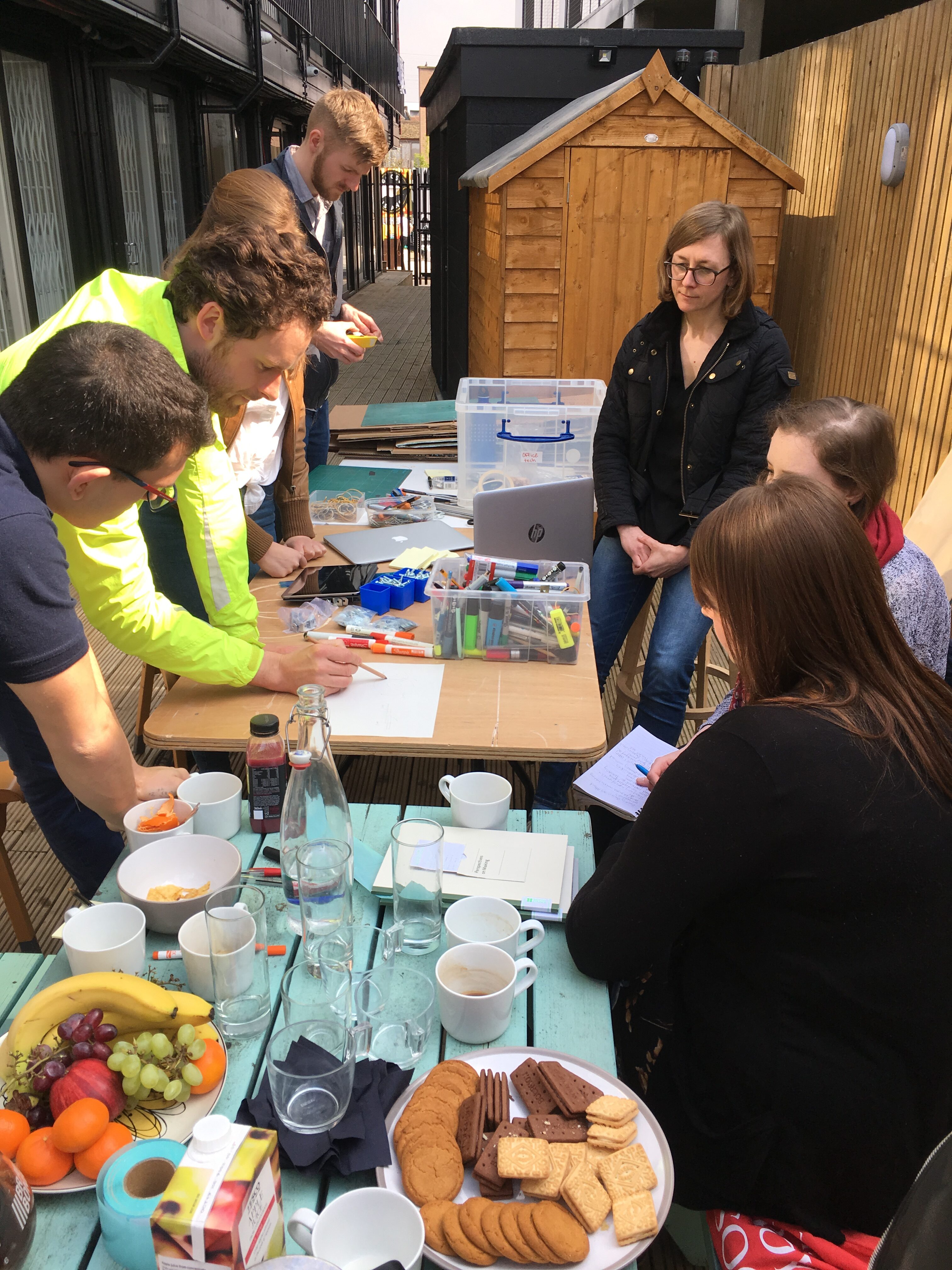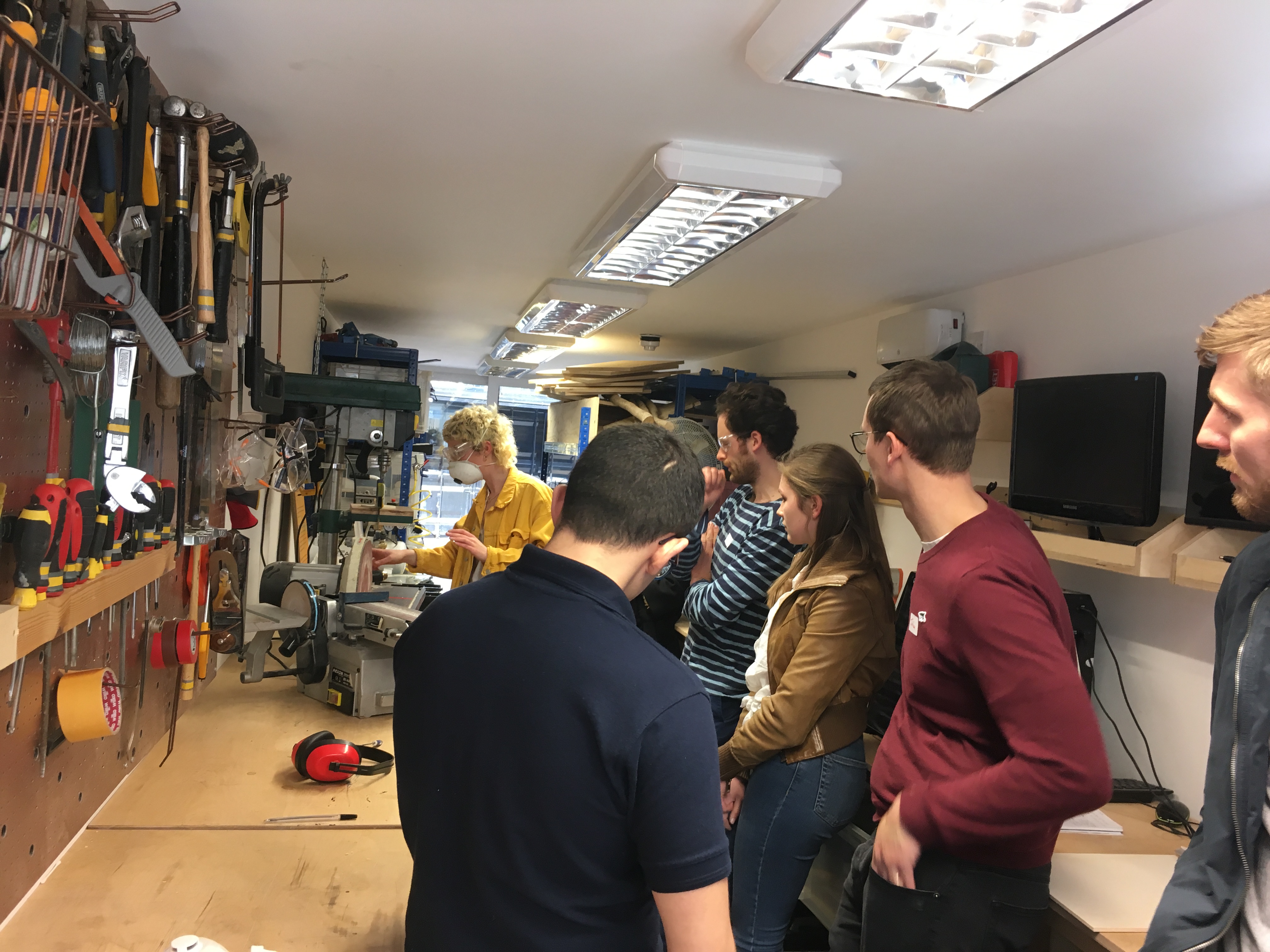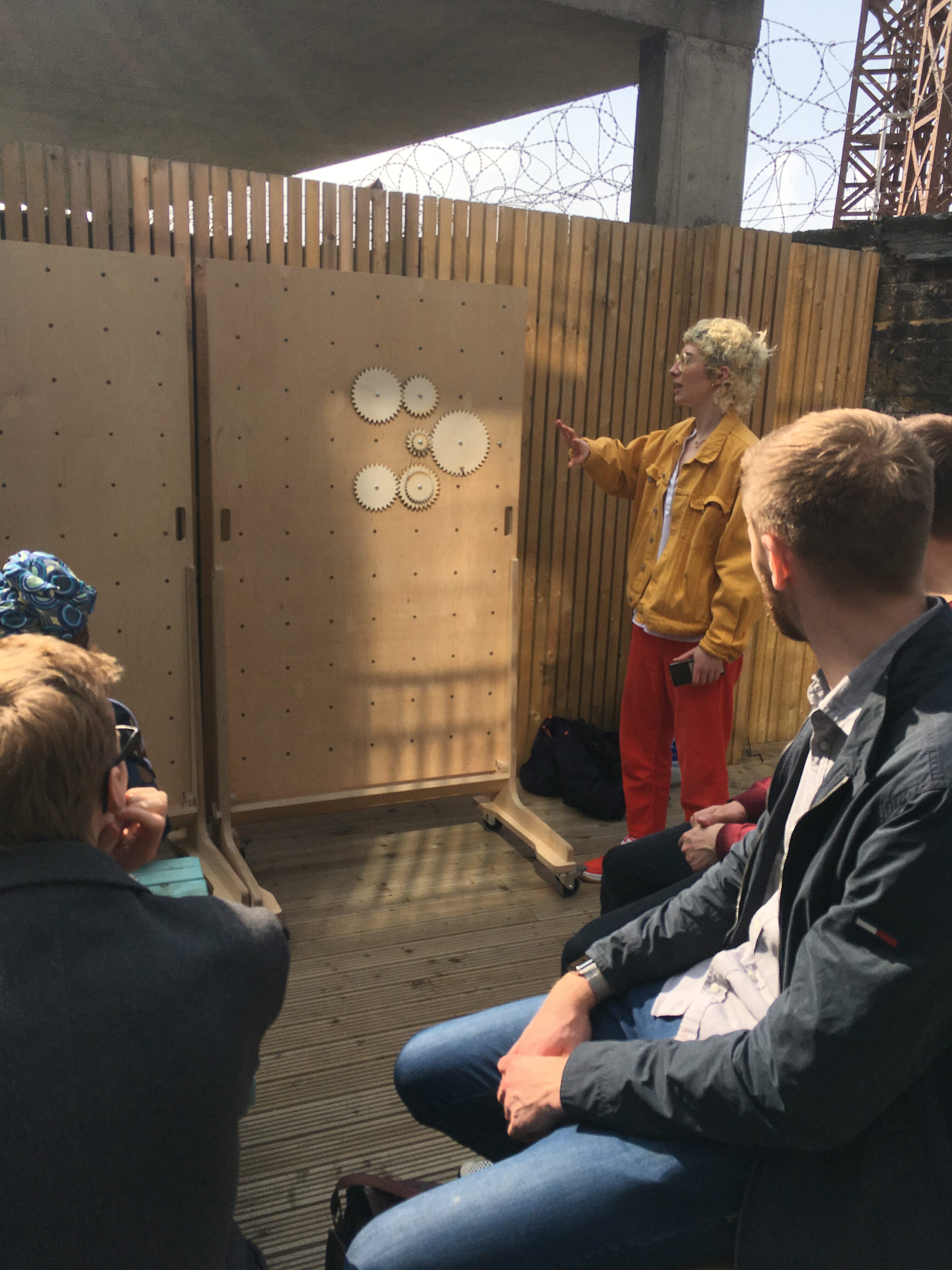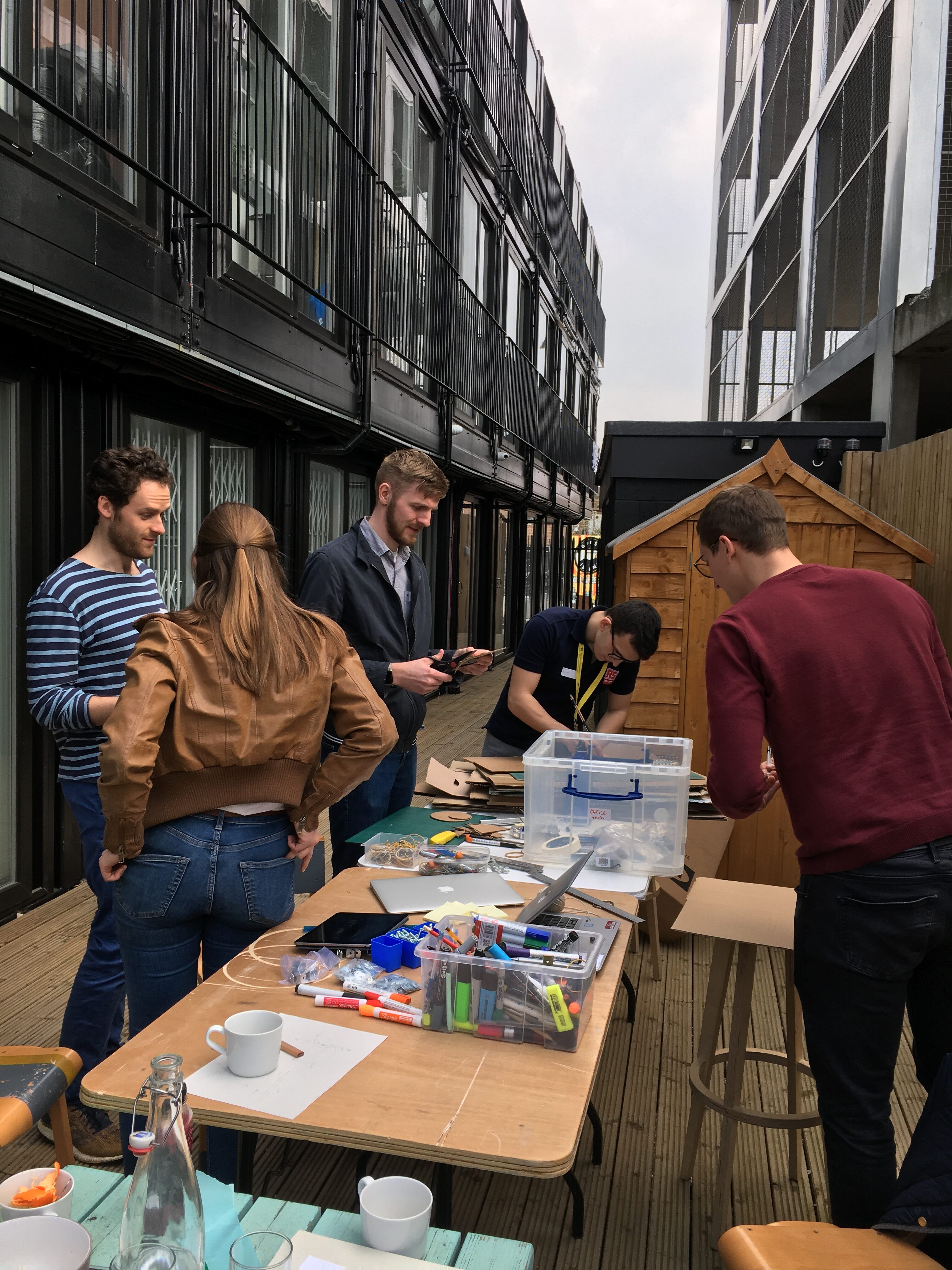At the end of March, we ran our first workshop in collaboration with the Science Museum and the Worshipful Company of Scientific Instrument Makers. This was the first ‘making’ step in a long collaboration between the two historic Institutions. Machines Room will be helping them make their Scientific Instruments in a Fab lab setting using modern distributable design techniques.

This first workshop was simply to introduce the participants to the idea of a maker-space, to train them on our machines and software and to start to make playfully and collaboratively as a group.
Many of the participants weren’t familiar with Maker spaces and the type of experimental making we can facilitate, so the workshop was designed to introduce them to the making practice we can offer at Machines Room.
We started with a pair of movable walls we have at Machines Room which have furniture bolt plugs set into the wood at regular intervals. The same system that all the furniture at Machines room is built on. These walls acted as the base for the makers to build a vertical mechanism system on.

We used a website called Gear Generator to design gears to mount to the wall. These drawings could then be adapted in a vector program and cut accurately on the laser cutter. We also experimented with using our workbench tools to design and cut cams to change the rotational force into a vertical force. The makers then took this and ran with this, from a maltese cross, made with a ginger biscuit, to a pulley crane prototype.
This was just the start of the making section of this project and the makers will return soon to start to use what we learnt in the workshop to start constructing replica’s of 18th-century scientific instruments using distributable design.

This relationship between scientific instruments and DIY making has a long history. At the start of the Industrial Revolution, it appeared that most scientific instruments were made and sold in London. These were made, not by corporations, but by creative, scientifically minded, makers. Often making use and re-use of the materials around them in the city. A lot of the scientific breakthroughs in design and engineering of the 18th century started as inventions made in peoples homes by amateurs. These ‘amateurs’ were so excited by these scientific and technological developments that they sought to disseminate this knowledge by writing instruction manuals and books so that anyone else could make them too.
Now, hundreds of years on, we are seeing a shift back to this DIY localised manufacture. With the technological development of digital manufacturing, machines are becoming available to anyone to use and then sharing of information and designs online fuelling the ‘new industrial revolution’ as Chris Anderson puts it in his book ‘Makers’. Production and design is moving out of the factory and back into the home or rather into the maker space.

A great example of this is the centrifuge. The centrifuge creates rotation around a fixed axis and the acceleration of this allows the denser particles to move towards the edge of the container and separate from a solution. This invention revolutionised chemical innovation with the ability to separate particles down to a nanoscale to aid research, analysis and diagnosis, it is also used in everything from G force simulators for space (or at Disney World) to your spin cycle in your washing machine!
The invention of this scientific instrument started as an experiment by a farmer to make the machine to separate cream from milk in the 19th century but was soon adopted by the scientific community.
Many of the centrifuges that followed developed by institutions and corporations are large, expensive, electrically powered machines. Fast forward to five years ago and makers are starting to reimagine the centrifuge in new ways, from the ‘dremelfuge’ using a Dremel or cordless drill and a 3d printed part to the revolutionary ‘paperfuge’ just made with a bit of paper and an elastic band.
This ‘amateur’ invention took the centrifuge from the oversized heavy machine costing thousands of pounds to something that can be made by anyone, anywhere in the world, costing just 20p.
For me, this is the possibility that makerspaces and a return to DIY production pose to the scientific community, an opportunity to redesign not for mass production but for mass invention.
Here at Machines Room, we’ve had our fair share of instrument inventions from the different resident makers who have shared their journey with us. One of these was Kniterate, a machine designed for the digital manufacture of knitted products, taking the iconic loom of the industrial revolution and giving it a 21st-century digital design makeover! Since launching their Kickstarter with us they have since moved to Makerversity to continue to push their machine further when I visited them last they had just taught their machine to start knitting complex stitch styles such as the cable knit and lace knitting.

I found it so interesting to learn about the history of the Worshipful Company of Scientific Makers in London and what it means to be a Scientific Instrument Maker today from talking to the young makers taking part. Many working as Scientific Instrument Makers now didn’t have a hand in the construction of their machines as it was often outsourced. Through being at Machines Room and introducing some of them to makerspaces I hope will in some way inspire these talented scientific Instrument makers to get tinkering themselves.